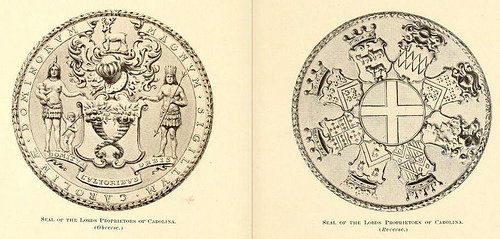
The Lords Proprietors were the eight Englishmen to whom King Charles II granted, by the Carolina charters of 1663 and 1665, the joint ownership of a tract of land in the New World called "Carolina." All of these men either had remained loyal to the Crown or had aided Charles's restoration to the English throne. Two of them-William Berkeley, former governor of Virginia, and John Colleton, a West Indies planter-actually had some personal knowledge of the New World. The other six Proprietors were Edward Hyde, earl of Clarendon; George Monck, duke of Albemarle; William, Earl Craven; John, Lord Berkeley; Anthony Ashley Cooper; and Sir George Carteret.
Although the king retained full sovereignty over Carolina, he granted the Lords Proprietors extensive powers, mainly to establish civil structures, to collect taxes and duties, and to maintain order, as well as to have certain game and mineral ownership. Through a combination of problems-mostly their tentative and inefficient governance of the huge area-the Proprietors failed to attract and keep settlers and to avail those that came a secure and orderly life. Moreover, the Proprietorship endured disruption through troubles with the Tuscarora Indians and pirates along the coast. By January 1712 the vast tract was separated into northern and southern parts in hopes of improving civic conditions. With their venture so lacking in success, the Proprietors were feeling pressure from the Crown to return the land. In 1719 South Carolina was set apart as a royal colony, and in 1729 George II made cash payments to all but one of the Proprietors that ended their or their heirs' roles as grantees of the former Carolina. Only the heir of George Carteret, John Lord Carteret (later second Earl Granville), refused to sell his one-eighth share and was eventually granted a large tract known as the Granville District.
Many North Carolina districts, counties, settlements, bodies of water, and landforms once bore the names of the original Lords Proprietors, and several still do. Included in these are Hyde County and two small communities named Clarendon; Albemarle Sound and Albemarle Beach (Washington County); two townships and the city of Albemarle in Stanly County; Craven and Carteret Counties; and Dare County's Colington (a version of Colleton) Island, with its small community of Colington and the nearby Colington Creek.